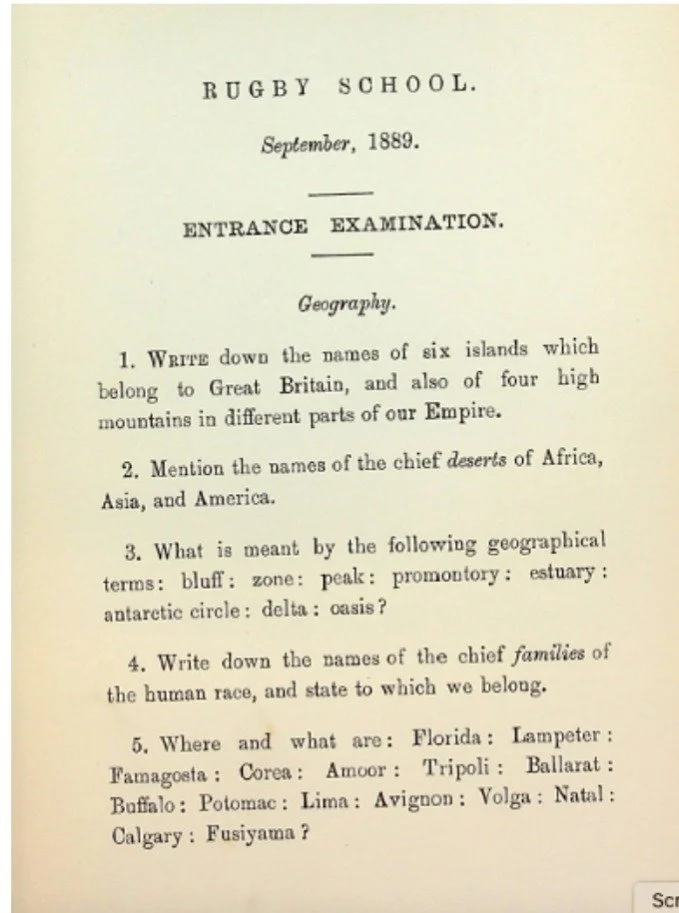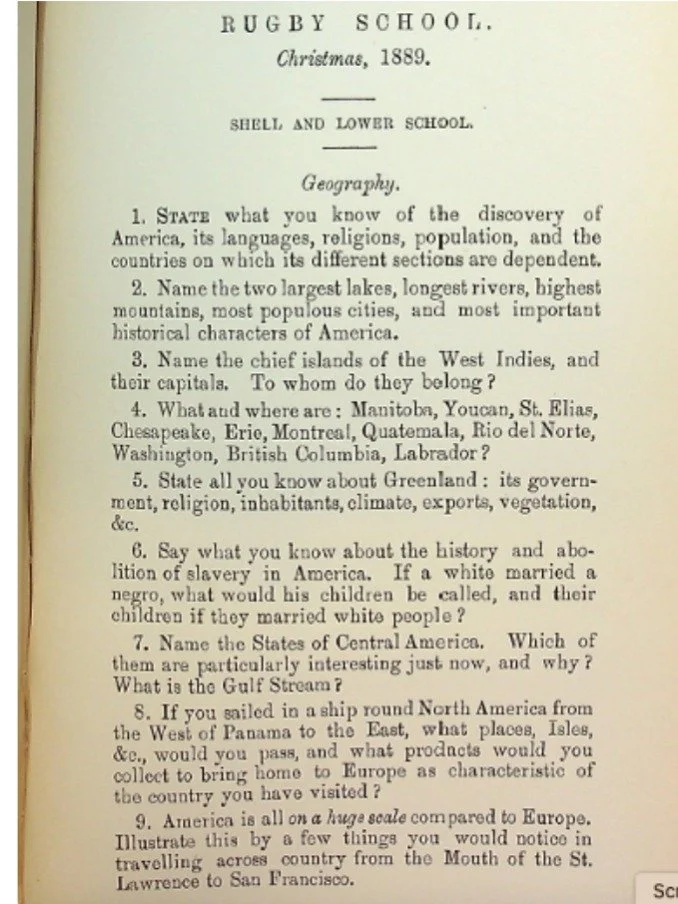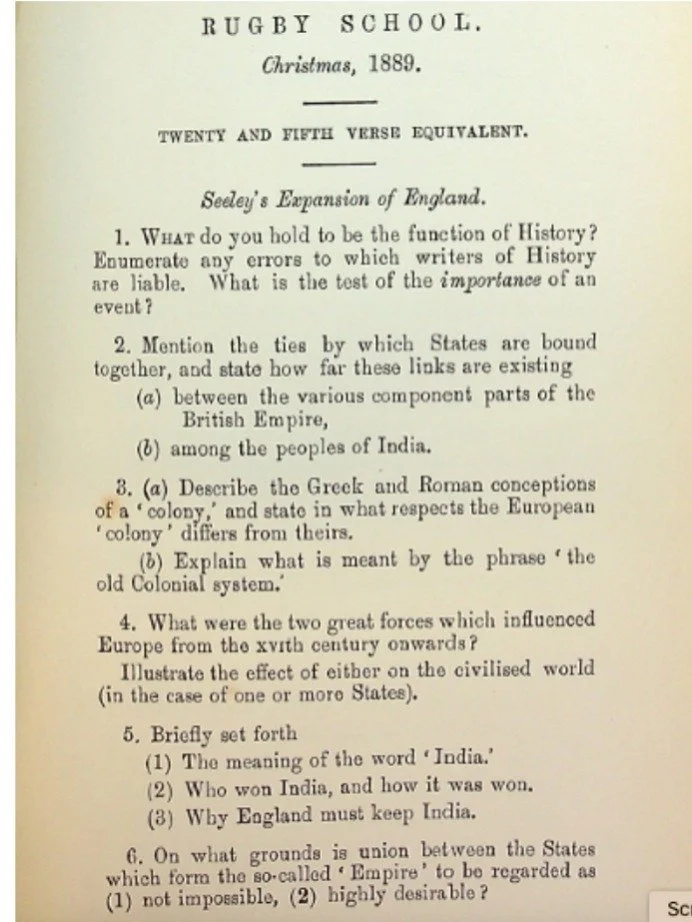Content warning – racist language from historical primary sources.
One means through which students in public schools were transformed into students of empire was through the curriculum, in both overt and covert ways. There has been significant research into how the education of Classics in public schools was used to inculcate imperial ideas among the elites. But the dissemination of a sense of ownership of the empire and ideological justifications for colonisation also happened in much more obvious ways.
Here are some examples of examination papers from the Rugby School archive, dated 1889.
Implicit in this Geography paper is a strong sense of ownership of the world, and it gives us a hint of the violent, irreparable ways in which the world was remade since the beginning of European colonization.


